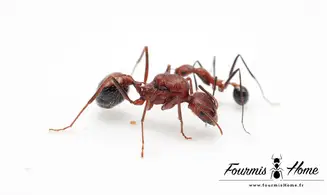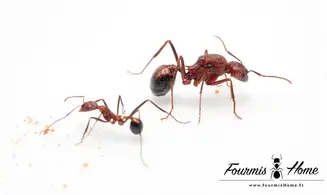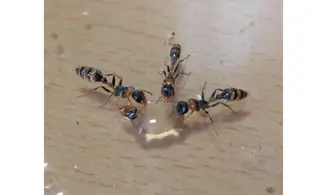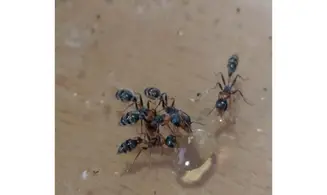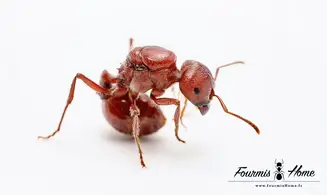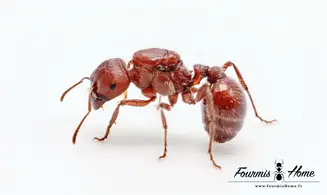Latin name: Myrmecocystus depilis
Common name: ants pot of honey
Subfamily: Formicinae
Breeding level: Experienced: shows higher requirements in terms of climate.
Distribution: Southern United States, Mexico
Habitat: diversity of xerothermic habitats ranging from forests, savannah to grasslands
Colony: monogyne
Queen: Size: 8 - 9mm Color: medium to dark brown head and thorax, deeper black gastre, voluminous thorax
Worker: Size: 3 - 6 mm Color: head and thorax brown to reddish yellow, black gastre
Soldier: not present
Males: Size: 4mm Color: blackish brown
Nutrition: Organic water + honey, Insects eg. Flies or mosquitoes or small crickets
Humidity of the air: Hunting area: 30 - 50% Nest: 50 - 70%
Temperature: Hunting area: 21 - 40 ° C Nest: 28 - 35 ° C
Hibernation: yes 4 months at 12 degrees
Nest shape: Nest in the ground, under the stones
Nest which agrees: tube in plaster the first year and later nest stone or natural terra
Nest size for adult colony: M - L
Substrate for terra: sand and clay
Planting: similar to meadow and savannah
Decoration: branches, roots, leaves,
Description: These beautiful ants are known for their jars of honey. it is a castre of specialized workers used as a food reserve. They are very active and aggressive, but show at first a slow development of the colony.
Foundation: cloistral (without food) in a test tube with a little sand
Adult colony size: up to 10,000 individuals
